This was published 8 years ago
Galle travel guide and things to do: 20 reasons to visit
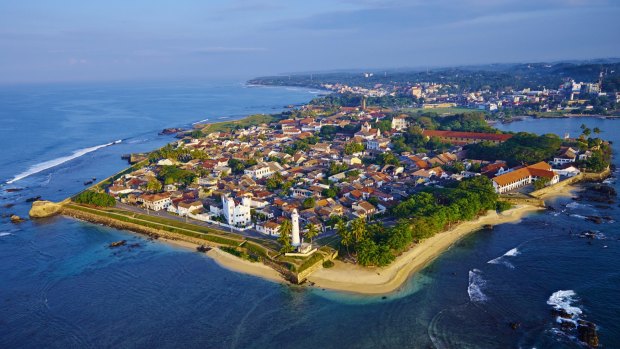
Built by the Portuguese and later fortified by the Dutch, the historic Galle Fort on the south-western coast of Sri Lanka is a UNESCO World Heritage Site.
1. EXPLORE GALLE FORT
Built by the Portuguese in 1588 and fortified by the Dutch during the 17th century, the UNESCO World Heritage Galle Fort survived the 2004 tsunami. Today, Galle Fort is the main reason visitors flock to Galle. A walking tour reveals history and lovely ocean views. A stroll around the streets past old warehouses, churches and historic houses offers fine colonial architecture and a glimpse into the past. The Dutch left an architectural legacy of homes, churches and warehouses along with Dutch-sounding road names. Dutch words pepper the Sri Lankan vernacular and the cuisine has some Dutch influence. See whc.unesco.org/en/list/451.
2. DUTCH REFORM CHURCH
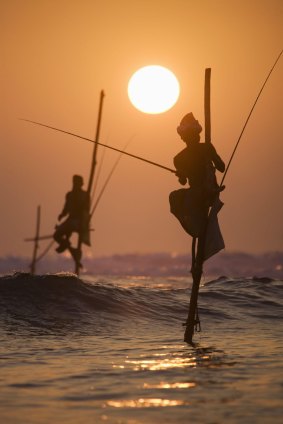
Sri Lanka's famous stilt fishermen at work in Kogalla. Credit: Alamy
On first impression the church, originally built in 1640, looks austere, but a closer look and a chat to the caretaker reveal some intriguing aspects. Part of the church's floor is paved with gravestones from the Dutch cemetery. There are plenty of stories attached to this church, including one about human remains hidden in the walls and under the floor. The church was rebuilt in the 18th century and houses an antique organ and a calamander wood pulpit.
3. NATIONAL MARITIME ARCHAEOLOGY MUSEUM
As Galle was once the island's main port, a visit to the National Maritime Archaeology Museum offers insights into the city's past Many of the artefacts on display were damaged by the 2004 tsunami, but the museum is still worth visiting. There are nautical objects such as maps, naval craft, ropes, earthenware and artillery guns. Many were recovered from shipwrecks and some are 800 years old. Nearby, the Galle National Museum has archaeological and anthropological displays on Galle's history and culture. See museum.gov.lk.
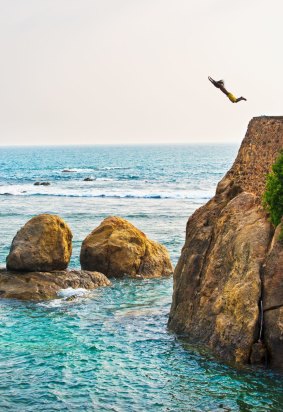
A man hurls himself from a cliff near Galle.
4. CLIFF JUMPING AT FLAG ROCK
It's thrilling to watch the cliff divers jump off the ramparts into the ocean, narrowly missing dangerous rocky outcrops. These fit young men hang around Flag Rock at the southernmost end of the fort, where the Dutch used to signal approaching ships to alert them to the danger. They earn their living diving into the ocean for tourists. Expect to pay about $10 to see them jump.
5. WATCH A CRICKET GAME
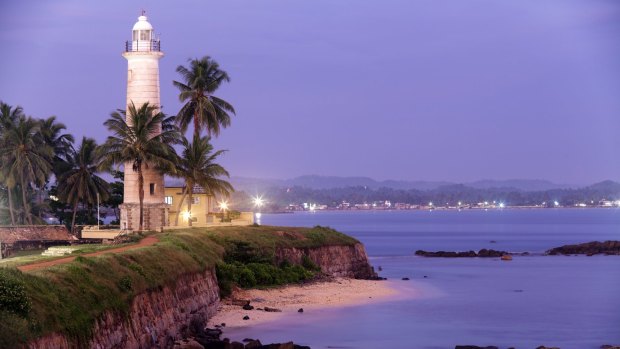
The Galle lighthouse.
A century ago, Galle International Stadium was a racecourse for the British. It's now the city's cricket grounds and has been since 1998. The first Test match was Sri Lanka v New Zealand. Shane Warne took his 500th Test wicket at the stadium, which is possibly one of the most scenic cricket grounds in the world. Locals often watch a game for free from the top of the Moon and Star bastions, where there's a bird's eye view of the ocean, stadium and the city.
6. WANDER AROUND THE DUTCH MARKET
Soak up the vibrant atmosphere of the market, which sits beneath a 300-year-old columned roof. It has been a hub of activity since 1861 and is filled with haggling locals shopping for fruit and vegetables. Tuk tuks zoom past stalls and further along the street there are spice shops and stores.
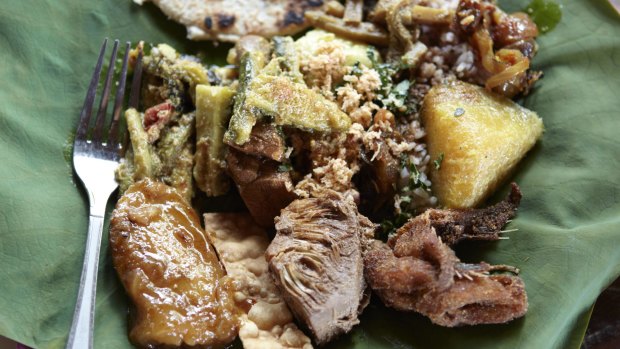
A fragrant Sri Lankan curry.Credit: Christina Pfeiffer
7. TAKE A BOAT TRIP
The Indian Ocean is a decent place to spot sperm whales, blue whales, humpback whales and dolphins. Blue whales grow up to 30 metres long and weigh almost 200 tonnes, while the sperm whale is the largest toothed whale. The narrow continental shelf off the Galle region allows whales to come close to the shore while on their annual migration across the Indian Ocean. The best places to spot the giant mammals are near Mirissa and Dondra Point, both of which are close to Galle.
8. SURFING
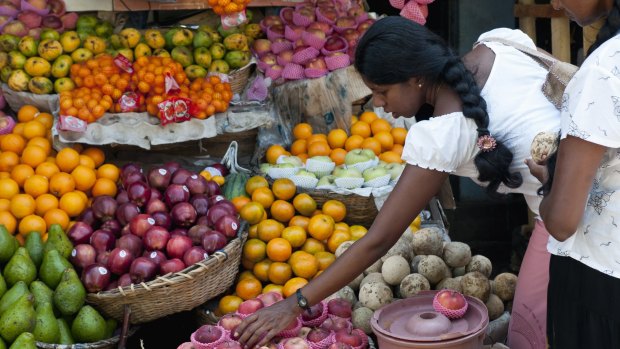
A woman selects fruit from a stall in Galle.
Although Sri Lanka is a popular surfing destination, most people recognise Galle for its fort and not its surf. The waves around Galle's beaches are fine for beginners, but keen surfers should head for popular surfing beach Hikkaduwa, about a 30-minute drive from Galle, or take a trip to Arugam Bay, north-east of Galle. Arugam Bay gets the Antarctic winter swells that hit Indonesia's southern shores and is arguably one of the best surfing spots in the world. May to November are the best months for surfing.
9. RUMASSALA MEDICINAL FOREST
The hike through the lush forest is lovely. The forest has an enchanted feel and it's rich with medicinal plants. There are lots of local mysteries and legends attached to this jungle, including a tale that the area was a favourite haunt of Hanuman, the fabled monkey king. On top of the hill there's a Buddhist dagoba built by monks from Japan. The spot has great views across Galle Bay.
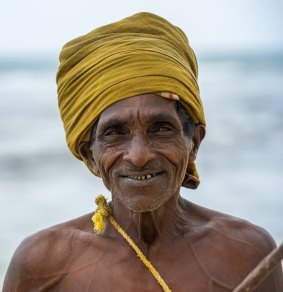
A stilt fisherman wearing a traditional Sri Lankan headdress.
10. PARTY AT UNAWATUNA
The Dutch landed at Unawatuna, 5 kilometres south-east of Galle, in 1640 and marched to Galle. After capturing Galle, the Dutch built houses for their officials in Unawatuna. These days, it is a lively beach party town with a selection of resorts and hotels. Besides swimming, sunbaking and surfing, there are plenty of activities on offer, such as yoga and cookery classes. Unawatuna now competes with Hikkaduwa, 17 kilometres north-west of Galle, as the beach-party capital of the region.
11. SCUBA DIVING
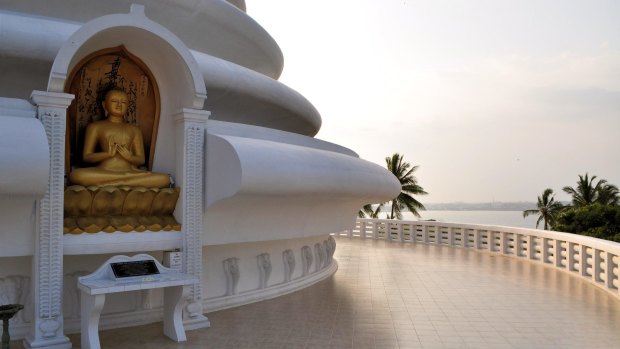
The Buddhist dagoba built by Japanese monks on top of a hill at Rumassala.Credit: Alamy
Galle was once Sri Lanka's main port, so it's not surprising many ships sailed and sank off the coastline. At the bottom of the Indian Ocean near Unawatuna lies a treasure trove of coral reefs and shipwrecks, including an old wooden English ship, the Rangoon, which lies 30 metres deep. The Napoleon and Galapiteala reefs are multi-level dive sites with a variety of fish, including bat fish, Napoleon wrasse and golden moray eels. See unawatunadive.com.
12. HANDUNUGODA TEA MUSEUM
The main reason to visit Handunugoda Tea Museum is for its white tea, which has antioxidant properties. Taste the tea and learn about the process of harvesting and cutting white tea, which came from China, where only emperors were allowed to drink it. Stalks are never touched at any time during the process. The museum is located on a family estate, which has tea, rubber, cinnamon and coconut trees. See virginwhitetea.com.
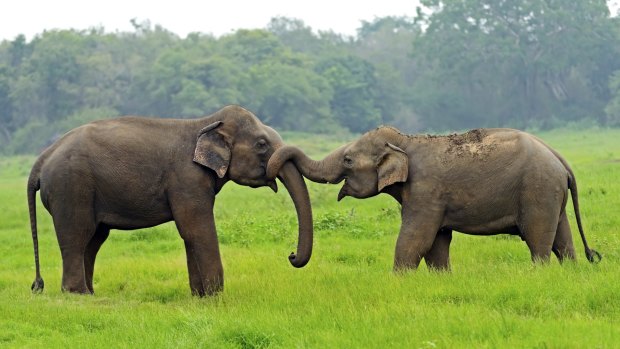
Elephants in the wild in Yala National Park, Sri Lanka.
13. KOGGALA TEMPLE
Koggala beach is best known for its stilt fishermen, who perch on poles and fish a few metres off the shore using bamboo rods. The practice started during World War II, when overcrowded fishing spots prompted some clever fishermen to devise a way to fish out on the water. Generations of fishermen have since fished in this way along Sri Lanka's southern coast. Koggala is also home to the Kathaluwa Buddhist temple, worth visiting for its murals and to see the first printing press brought by the Dutch to Sri Lanka.
14. HABARADUWA TURTLE HATCHERY
Five of the seven turtle species in the world are found in Sri Lanka and the Habaraduwa Turtle Hatchery protects them by buying turtle eggs from fishermen and local people. The eggs are incubated, hatched and the turtles released into the ocean. It's a local business that has been in operation since 1986. Thousands of eggs are incubated each month and the hatchery also cares for sick and injured turtles. See seaturtlefarm.org.
15. SHOP FOR LOCAL CRAFTS
Galle is famous for lace, gem stones and wood carvings. At Shoba Gallery, women are taught the art of dyeing and lacework. The gallery is the place to learn traditional Sri Lankan craft, as it offers lace-making, paper-making and toy-making classes. There's also a small cafe. Another place to shop is Barefoot, which has stylish clothing, jewellery, home decorations and crafts. Elephant Walk Arcade also has a collection of shops worth browsing. See shobafashion.org; barefootceylon.com.
16. HIYARE FOREST RESERVE
A rainforest reserve 17 kilometres from Galle, along the Udugama road, Hiyare is a pristine escape rich in flora and fauna. The reserve is home to endemic wildlife such as the Sri Lankan green pigeon, the green pit viper and the purple-faced leaf monkey. The Wildlife Conservation Society of Galle runs a wildlife rescue programme here. See galle.mc.gov.lk.
17. THE OLD RAILWAY
A creative shopping and eating experience in Galle run and owned by British fashion designer Catherine Rawson, the Old Railway is located in one of Galle railway station's historic storehouses. It has a studio space, cafe and shop. The shop is packed with hand-made clothes, crafts and jewellery. The displays are in antique cupboards and fabric is bought in small quantities, so most pieces are created in limited editions. See theoldrailwayshop.com.
18. YALA NATIONAL PARK
A trip to Yala National Park offers the opportunity to spot leopards, elephants and sloth bears. Other wildlife species in the park include wild boars, antelopes, crocodiles and hornbills. The freshwater, scrub and woodland areas attract many birds and it's possible to spot more than 100 different species in one day. From Galle, you can easily visit the park as a day trip.
19. INDULGE IN A SRI LANKAN MASSAGE
Sri Lankan herbal massages are based on Ayurvedic principles using natural ingredients. It's an ancient system that encourages wellbeing. For a luxury treat, several resort spas offer treatments. Most begin with a consultation with an Ayurveda doctor who is trained to diagnose treatments according to body type (vata, pitta or kapha). Try Spa Naturel at The Fortress or The Baths at Amangalla. See thefortress.lk; amanresorts.com/amangalla/spa.aspx.
20. THE FOOD
Like in most parts of Sri Lanka, the food in Galle is delicious. As it's a coastal city, there's plenty of fresh seafood and a range of restaurants. Of course, there are plenty of places that dish up delicious Sri Lankan curries, along with some lovely cafes within Galle Fort. The restaurant in the Rampart Hotel has a good view of the fort's walls and the ocean.
The writer travelled to Sri Lanka as a guest of Bunnik Tours. See bunniktours.com.au.
Sign up for the Traveller Deals newsletter
Get exclusive travel deals delivered straight to your inbox. Sign up now.